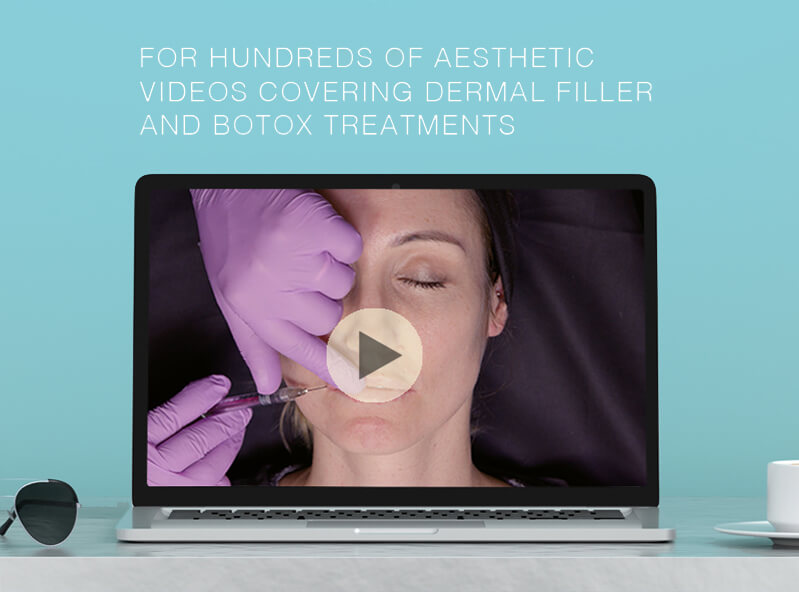Vascular occlusion is a serious side effect that can occur during dermal filler injection. While this is alarming, if you are able to recognise an occlusion immediately, you can ensure a good outcome for your patients and hopefully a full recovery. If dermal filler is injected into a blood vessel, it can cause a blockage, leading to a loss of blood supply to nearby tissues. Another possibility is that an accumulation of filler can compress a blood vessel, causing either partial or total disruption to the circulation. Areas that are particularly at risk include the nasolabial folds, nose, forehead, glabella, and lower lip. Fortunately, vascular occlusions are exceptionally rare.
Dermal Filler Products
I prefer to use hyaluronic acid based products, and it has been estimated that for every 10,000 injections performed with these products, only between 3 and 9 will lead to a vascular occlusion. Nevertheless, there is always a chance of this side effect, no matter how experienced the practitioner is. It is important to remain vigilant for the signs that will be described in this video. A vascular occlusion can be difficult to recognise at first because the signs and symptoms can be subtle. The presentation of vascular occlusion can be divided into three key stages; first you have the immediate symptoms which occur during the procedure, then the early signs that occur within 24 hours, and the late symptoms which develop after the first 24 hour window.
The Immediate Signs Of A Vascular Occlusion
Usually the very first indication is blanching, with the size of the blanched area varying greatly. This can be quite hard to spot, and is further complicated by the fact that blanching can occur at a location distant to the injection site. The patient may also complain of pain which is beyond the level that you would expect during a normal procedure. However, pain doesn’t always occur, with one survey stating that in 47% of intravascular events, pain was either absent or mild. You might also notice a cold area on the patient’s face, or the patient may complain of a tingling sensation. Further examination of the patient at this stage may reveal a capillary refill time that is above 2 seconds, and this can help reach a diagnosis. Your goal should be to identify a vascular occlusion at this stage.
Visible Symptoms
Without prompt treatment, the condition will worsen, and further symptoms will develop over the next few days. Be aware that the timing of their appearance varies between patients, so both early and late signs can be grouped together. The patient may notice that the area starts to feel quite sore, or a rash could appear, causing a dusky discolouration of the skin, which is called livedo reticularis. Vesicular type pustules may also emerge and, as with skin blanching, the affected area can be far away from the injection site. For example, if you inject in the chin you could see these skin changes in the cheeks. Ultimately, without treatment, the skin could start to undergo necrosis.
Talking To Your Patients About Vascular Occlusion
At the end of a procedure, even if all appears to have gone well, it is important that you tell patients the common signs of a vascular occlusion. Explain that you are not trying to worry them, and that you just want to keep them well-informed. This is because fast treatment is key here – if a patient realises themselves what is happening, they know to seek urgent medical attention without delay. The important take home message is that it is critical that practitioners of medical aesthetics are aware of vascular occlusions, and can recognise the signs and symptoms.
Find Out More
Book your space on a practical training day with Dr Tapan and his team at PHI College now by heading over to our courses page, or find out more about the complications courses we offer. Every course you book gives you PHI Points; for every £50 you spend, you get 1 Point, equal to £10, that can be redeemed against future training days here at PHI College. Find out more by filling in our contact form or get in touch and stay up to date via our social media.
< Back To BlogVideos With E-Mastr
All attendees receive an exclusive discount on introductory eMASTR subscription following completion of the course, which uses eMASTR resources to supplement theoretical learning. www.e-mastr.com

With an extensive range of videos from step by step treatments to practice matters, you can be safe in the knowledge that you have everything you need there.
Visit E-Mastr